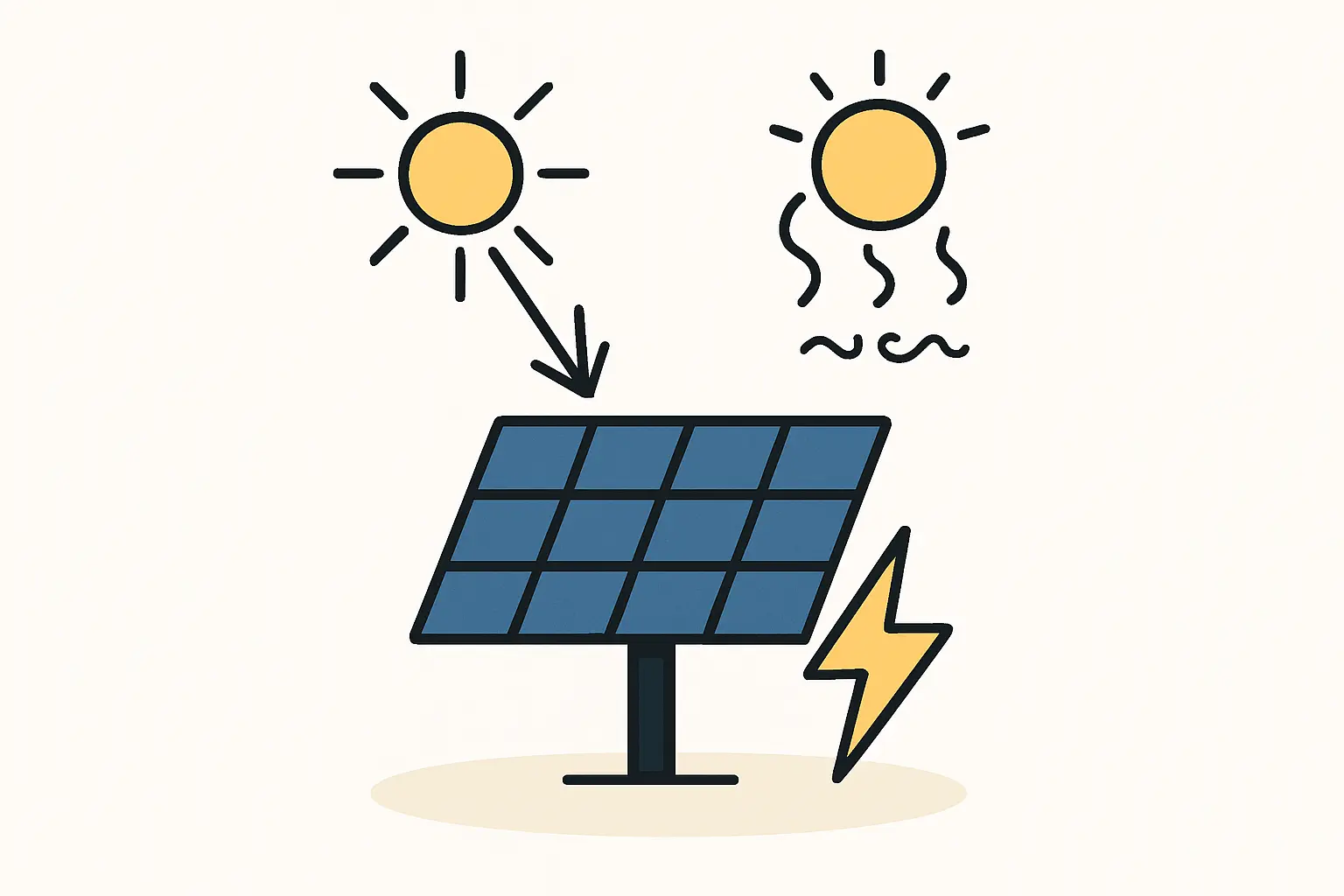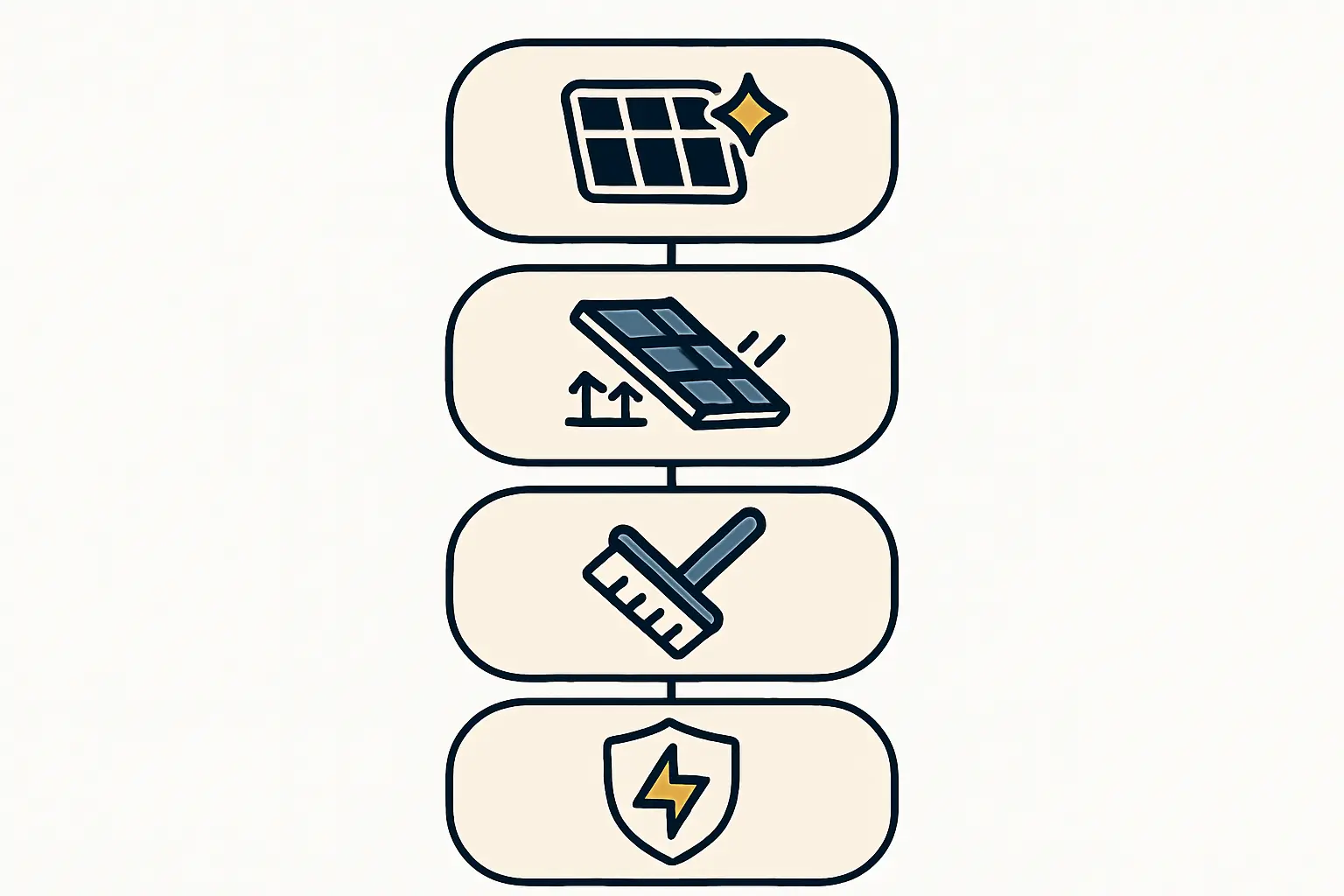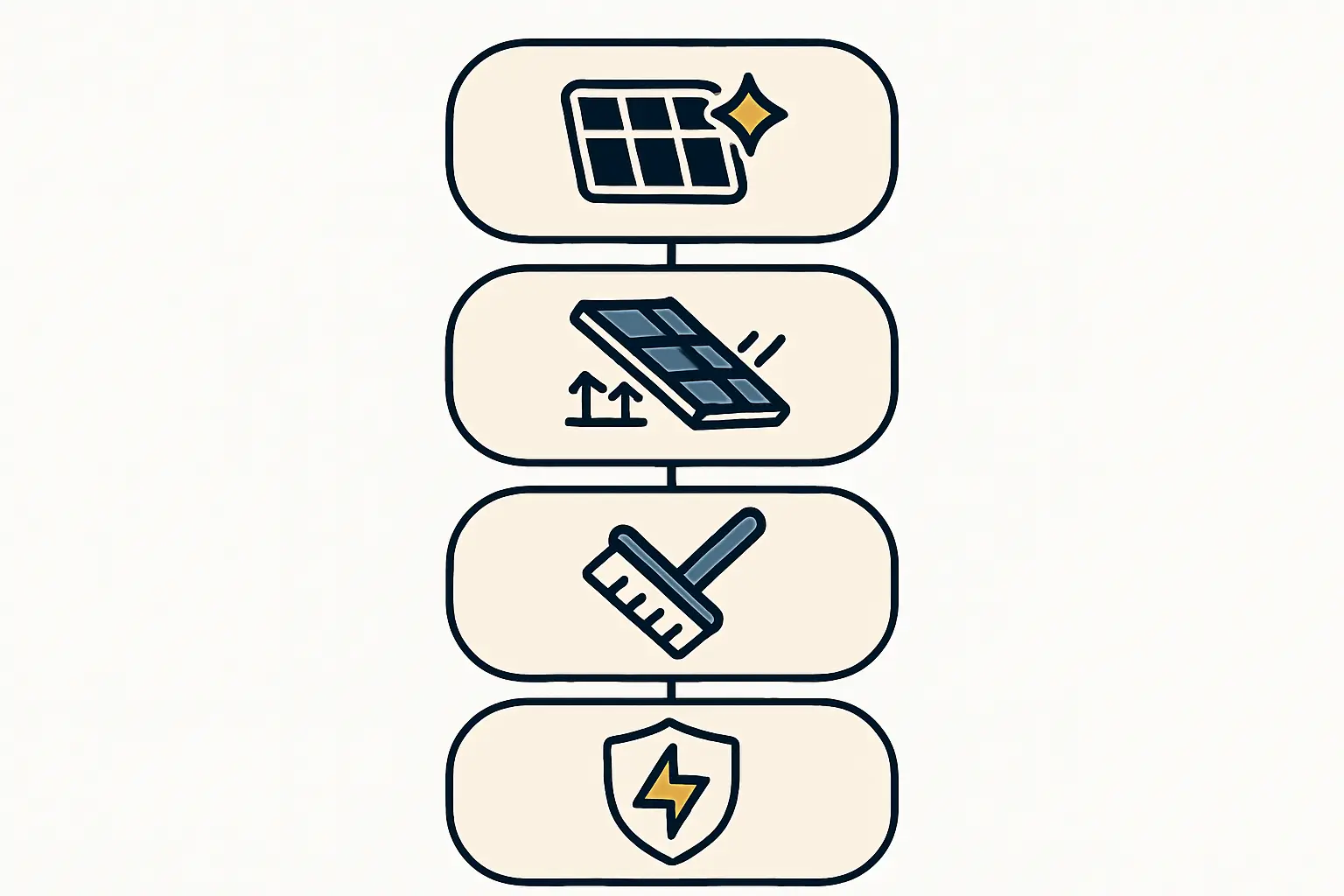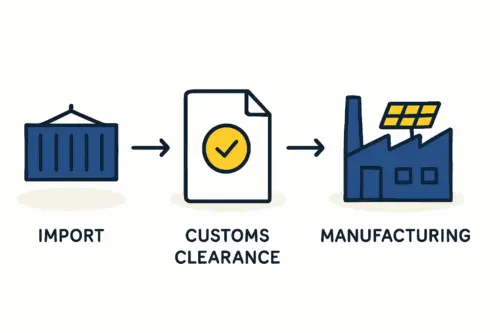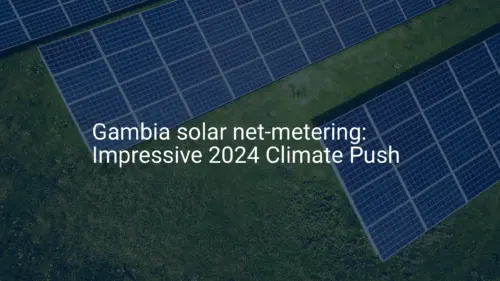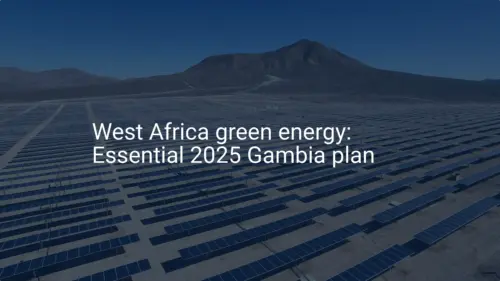An investor planning a solar module factory in Europe might focus primarily on maximizing wattage and efficiency under standard test conditions. But transplanting that same strategy to The Gambia without adaptation would likely lead to underperforming assets and disappointed investors.
The country’s unique combination of intense heat and seasonal dust is a technical reality that must be addressed at the production level—not just during installation.
This article explores the specific environmental challenges in The Gambia and details the engineering and material considerations for producing solar modules that are not only efficient but also durable and resilient in the West African climate.
The Dual Challenge: Heat and Dust in The Gambia
The Gambia’s climate, with its high ambient temperatures and seasonal Harmattan winds carrying Saharan dust, creates a formidable environment for photovoltaic technology. These two factors—extreme heat and abrasive, pervasive dust—are not minor inconveniences; they are fundamental operational hurdles that directly impact energy yield, module lifespan, and the financial viability of a solar project.
High Operating Temperatures: Solar modules can reach 85°C or higher under the Gambian sun. This intense heat directly reduces the efficiency of solar cells and accelerates the physical degradation of module components.
Heavy Dust Soiling: Fine dust from the Harmattan season can coat module surfaces, leading to significant “soiling” losses. Research indicates this can reduce energy production by 10% to 25% if not managed, directly impacting revenue.
Understanding how to engineer modules to withstand these specific stressors is crucial for building a successful and sustainable solar manufacturing business in the region.
How High Temperatures Affect Solar Module Performance
While sunlight is the fuel for a solar module, excessive heat is a persistent adversary. The impact of high temperatures is twofold: immediate power loss and long-term material degradation.
Immediate Efficiency Loss: The Temperature Coefficient
Every solar module has a “temperature coefficient of power,” a specification that indicates how much its power output will decrease for every degree Celsius the temperature rises above the standard test condition of 25°C. For typical crystalline silicon modules, this is around -0.3% to -0.45% per °C.
This means that on a hot day when a module’s surface reaches 75°C (a 50°C increase over the standard), its power output can decrease by 15% to 22.5%. For any business modeling a solar plant’s energy yield, factoring in this temperature-induced loss is critical for accurate financial projections.
Ready to make big Profits?
The solar Industry is Booming
WE HELP NEWCOMERS to the solar industry start their own solar module production line. Customers can make BIG PROFITS by selling modules and finding investors, without wasting money and time on things they don't need!
Long-Term Degradation and Material Stress
Sustained high temperatures accelerate the aging process of a module’s components. The constant expansion and contraction of materials can lead to mechanical stress, while the heat itself can cause chemical changes.
Encapsulant (EVA) Browning: The Ethylene Vinyl Acetate (EVA) that encapsulates the solar cells can turn brown over time when exposed to high heat and UV radiation. This browning reduces the amount of light reaching the cells, permanently lowering the module’s output.
Accelerated Degradation Rates: Standard solar modules are often warrantied for a degradation rate of around 0.5% per year. However, studies in hot climates show that this rate can climb to 0.8% or even 1.0% annually. This seemingly small difference has a significant cumulative effect on a project’s lifetime energy production and return on investment.
The Pervasive Impact of Dust on Solar Production
The Harmattan season brings a fine, reddish-brown dust that settles on every surface, including solar modules. This phenomenon, known as soiling, is more complex than simple dirt accumulation.
Fine particles block sunlight from reaching the solar cells, directly reducing electricity generation. Unlike the rain-washable dirt found in other regions, this fine dust can form a cement-like layer when combined with morning dew, making it difficult to clean. The dust’s abrasive nature can also cause microscopic scratches on the glass surface during cleaning, leading to a gradual, irreversible loss of transparency over many years.
Engineering Solutions for a Hot and Dusty Environment
A manufacturer in The Gambia can build a competitive advantage by producing modules specifically designed for these conditions. This requires strategic choices in materials and assembly processes.
Mitigating Heat: Material and Design Choices
The goal is to dissipate heat more effectively and use materials that are inherently more stable at high temperatures.
Backsheet and Frame Design: A highly thermally conductive backsheet can help pull heat away from the cells, while a well-designed aluminum frame can act as a heat sink. Even the color matters; a white backsheet reflects more light and heat than a black one, keeping the module cooler. A comprehensive understanding of solar module components is essential for making these strategic choices.
Cell Technology: Certain solar cell technologies have better temperature coefficients than others, meaning they lose less efficiency as they heat up. Factoring this into the product design can provide a performance edge in the local market.
Combating Dust: Surface and Sealing Technologies
Combating dust requires preventing it from both accumulating on and entering the module.
Anti-Soiling Coatings: Applying a special hydrophobic and anti-static coating to the front glass can significantly reduce dust accumulation. These coatings make the surface slippery, encouraging dust to be blown off by wind or washed away more easily by infrequent rains.
Robust Sealing: The junction box, which houses the module’s electrical connections, must be sealed to a high Ingress Protection (IP) rating (e.g., IP67 or IP68) to prevent fine dust from entering and causing short circuits or corrosion. The edge seal around the laminate is equally important for preventing moisture and dust ingress. The debate over glass-glass vs glass-backsheet solar modules often highlights durability, as the hermetic seal of a glass-glass module can offer superior protection in harsh environments.
The Importance of High-Quality Encapsulants and Backsheets
The materials holding the module together are its first line of defense against the climate.
Encapsulant Choice: While EVA is the industry standard, POE (Polyolefin Elastomer) is an alternative that offers superior resistance to heat, humidity, and Potential Induced Degradation (PID). For a premium module designed for the Gambian market, using POE could be a key differentiator. A deep understanding of the solar module lamination process is essential for any prospective manufacturer.
Backsheet Quality: A low-quality backsheet will quickly crack, yellow, and delaminate under intense UV and heat, compromising the module’s electrical safety and longevity. Investing in a high-quality, multi-layer backsheet with proven field performance in hot climates is not the place to cut costs.
A Practical Example: J.v.G. Technology’s Approach in West Africa
Based on experience from J.v.G. turnkey projects in similar climates, the focus shifts from peak “laboratory” efficiency to long-term “field” resilience. For one project in West Africa, the technical consultation process prioritized materials with proven heat and PID resistance. A specific POE encapsulant was selected over a standard EVA, and modules with a higher IP-rated junction box were specified. While this slightly increased the upfront material cost per module, financial modeling showed that the improved durability and lower degradation rate would result in a 7% higher energy yield over the project’s 25-year lifespan, delivering a much stronger return on investment for the end customer.
Frequently Asked Questions (FAQ)
What is a temperature coefficient in solar modules?
The temperature coefficient of power is a value indicating how much a solar module’s power output decreases for every degree Celsius rise in temperature above 25°C. A lower (less negative) value is better for hot climates.
How often do modules need cleaning in a region like The Gambia?
During the Harmattan season, cleaning may be required as frequently as every few weeks to prevent significant energy losses from dust soiling. The optimal cleaning schedule depends on the severity of the dust, local labor costs, and water availability, requiring a cost-benefit analysis.
Are glass-glass modules better for hot and dusty climates?
Glass-glass modules can offer enhanced durability. The rear glass sheet provides an excellent barrier against moisture and mechanical stress, and their hermetic seal can be more effective at preventing dust ingress. However, they are typically heavier and may have different heat dissipation characteristics, requiring careful evaluation for each project.
Does the color of the module frame or backsheet really affect temperature?
Yes. Lighter colors, particularly white backsheets, reflect more sunlight and absorb less heat. This can result in a slightly lower module operating temperature—by a few degrees—which contributes to higher energy production and slower degradation over the module’s lifetime.
Conclusion: Building for Resilience, Not Just Efficiency
For entrepreneurs entering the solar manufacturing space in The Gambia, the path to success lies in producing a product intelligently adapted to the local environment. Focusing solely on maximizing peak wattage in a controlled setting misses the bigger picture.
The most successful manufacturers will be those who engineer modules for long-term resilience against heat and dust. Through informed decisions on materials, coatings, and sealing technologies, a new factory can produce high-performance modules that build trust and deliver reliable, long-term value in the growing West African solar market. A deep understanding of environmental adaptation is the cornerstone of any robust business plan.

